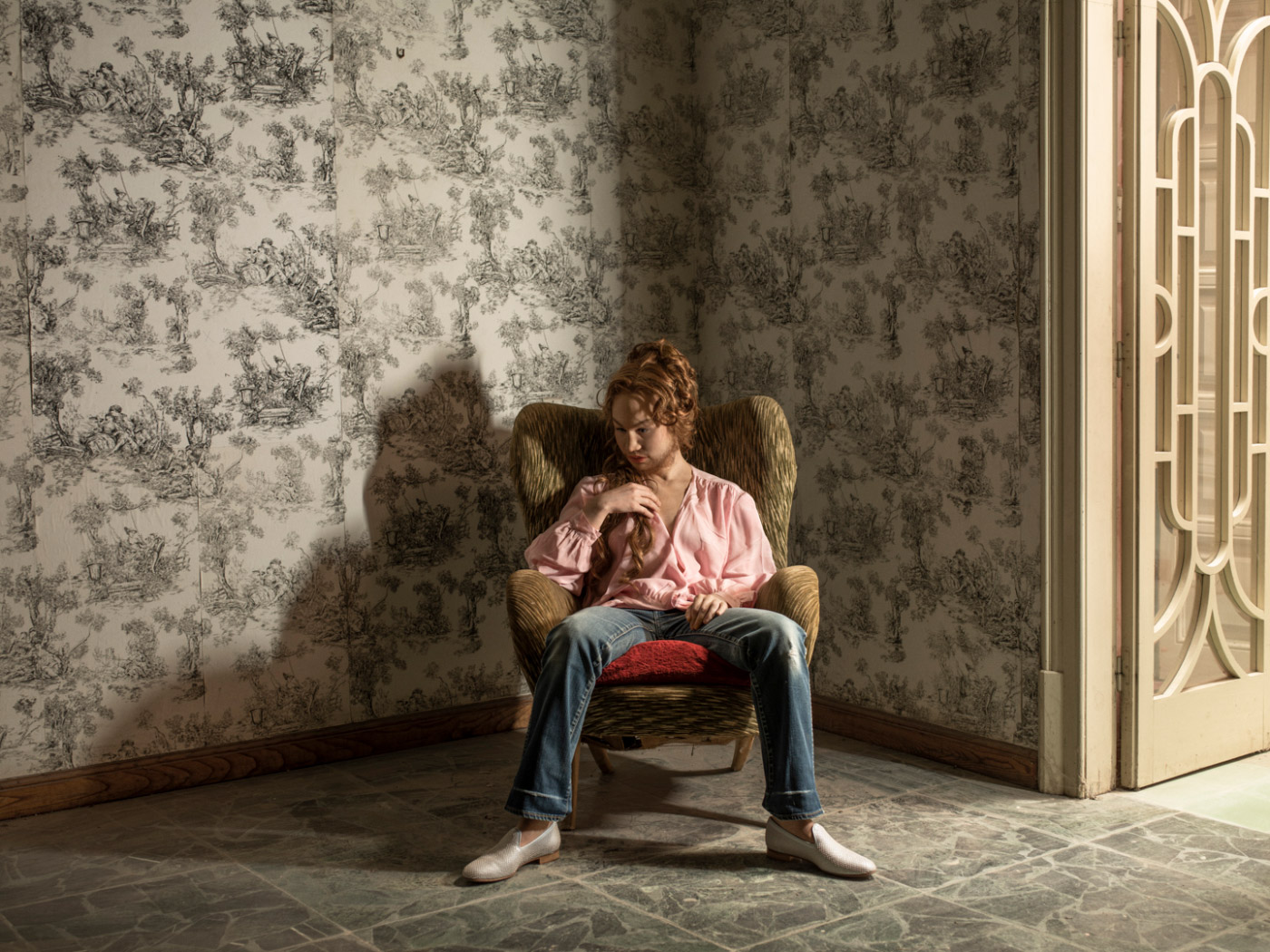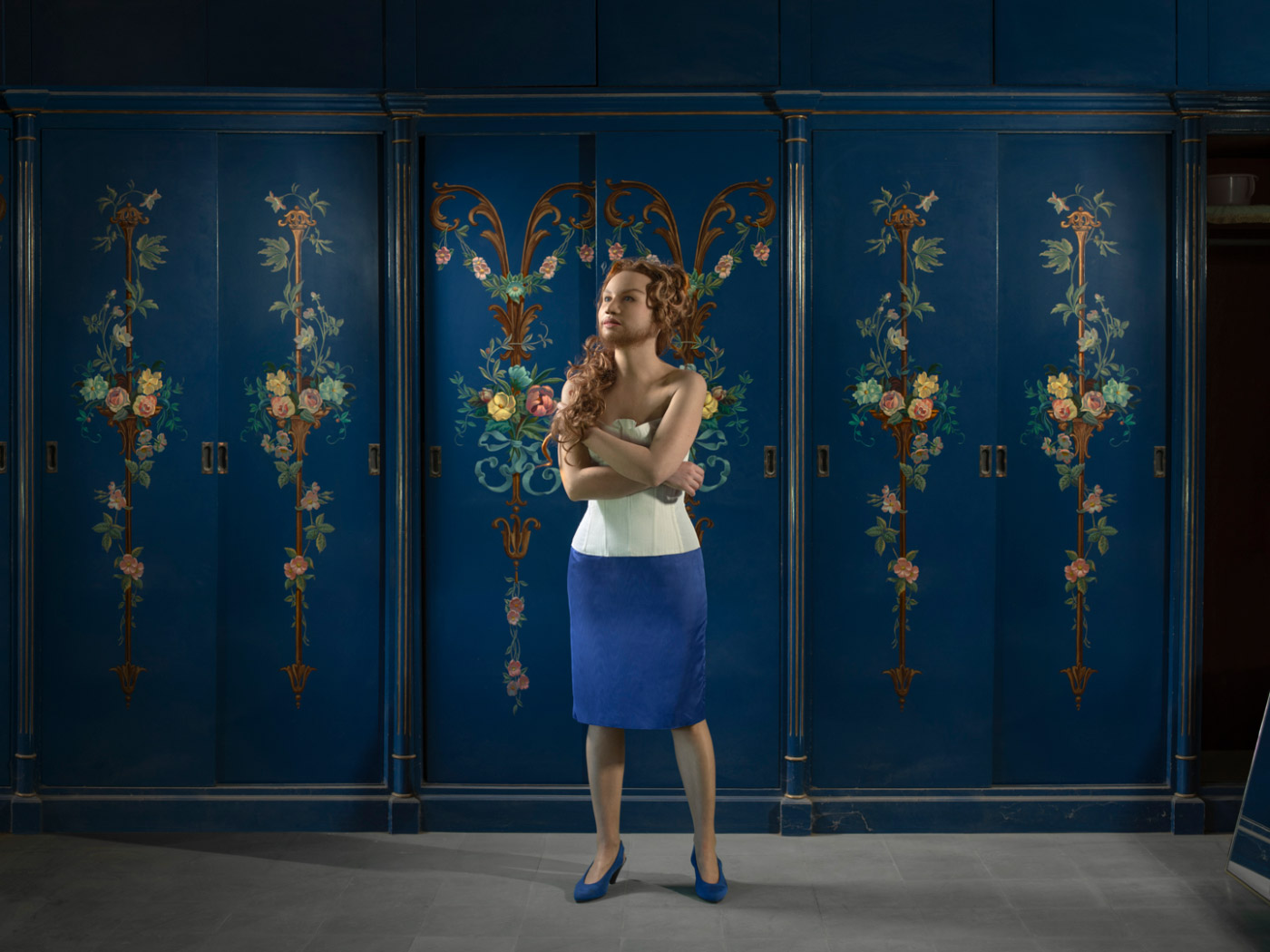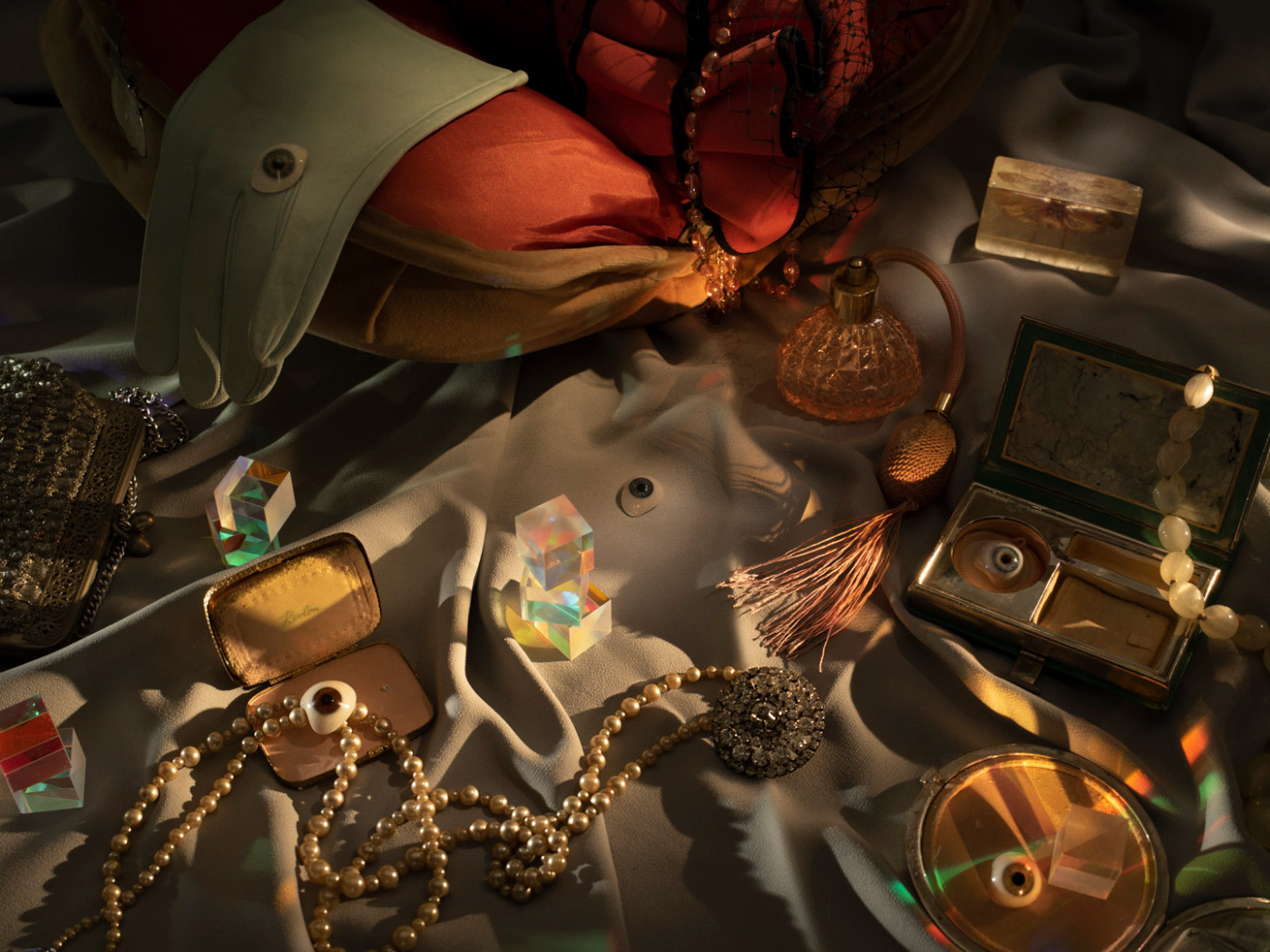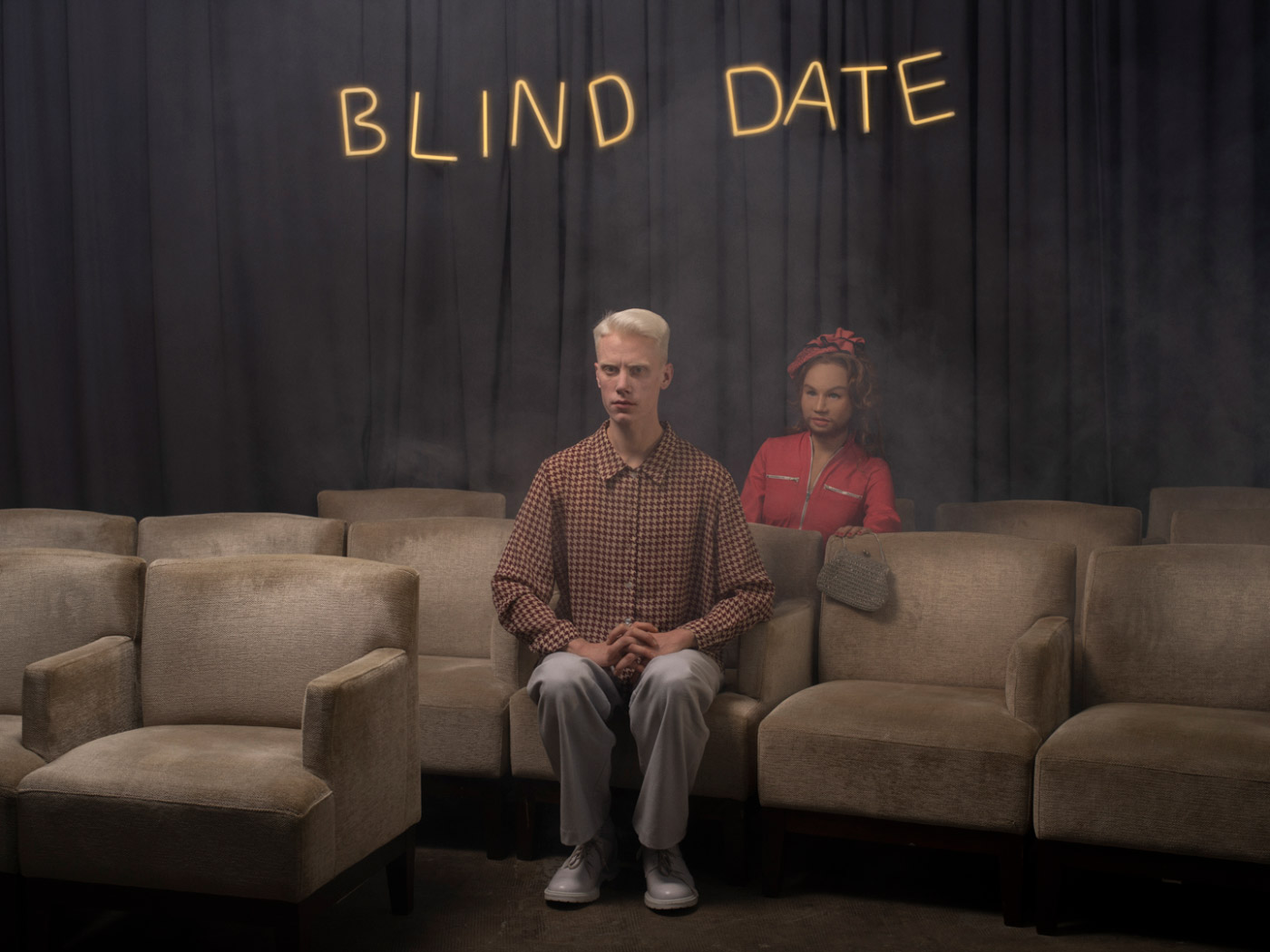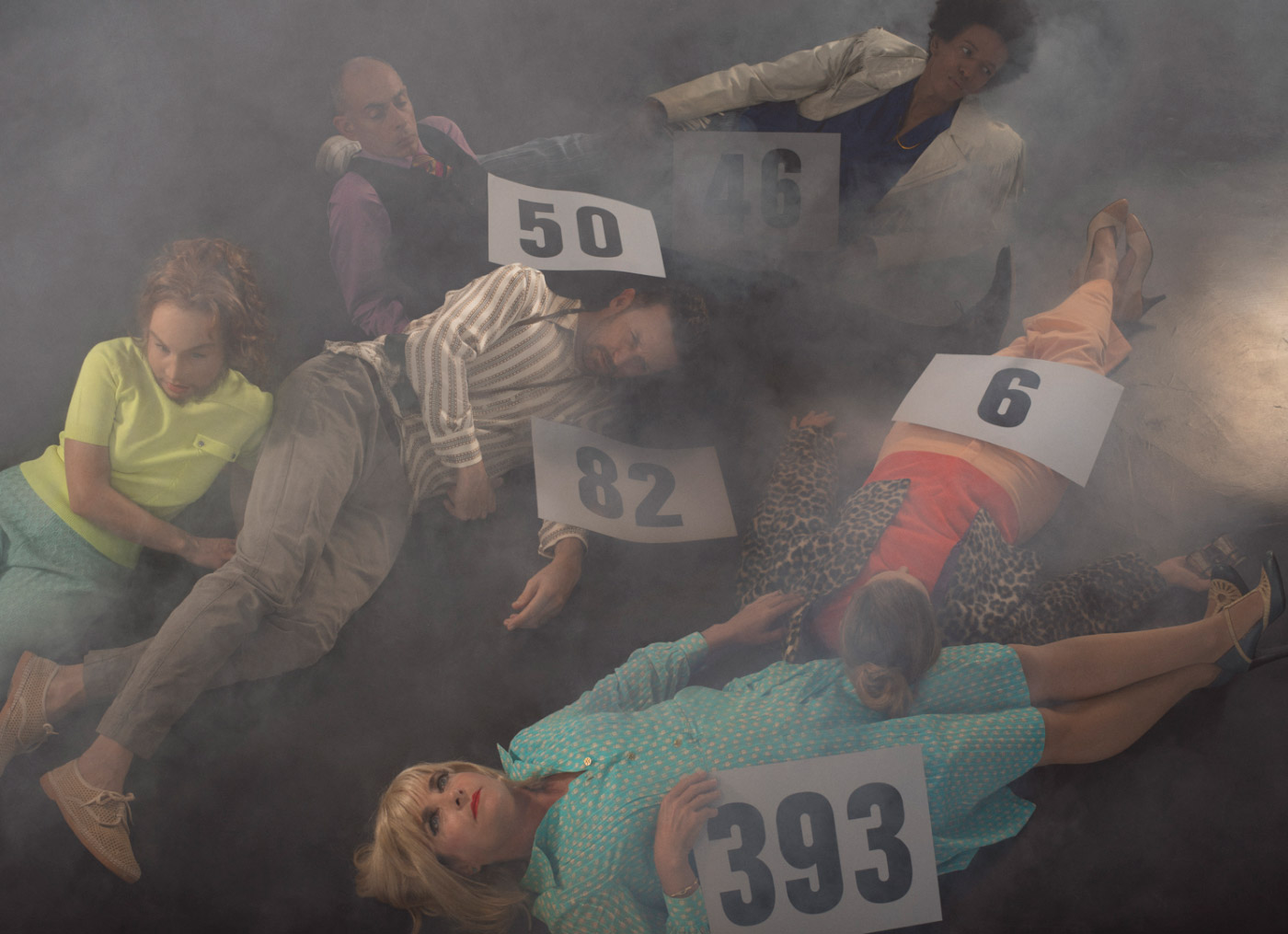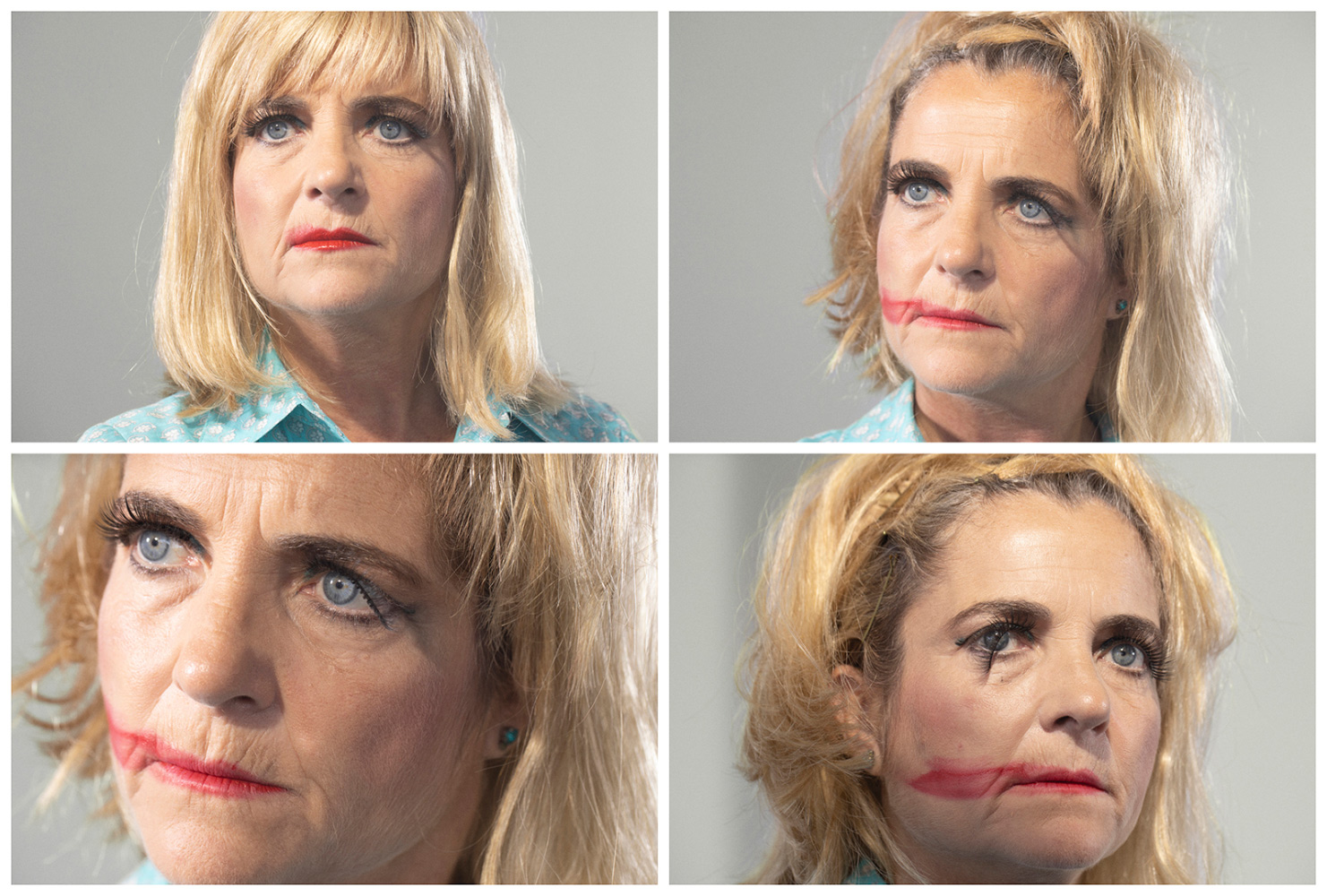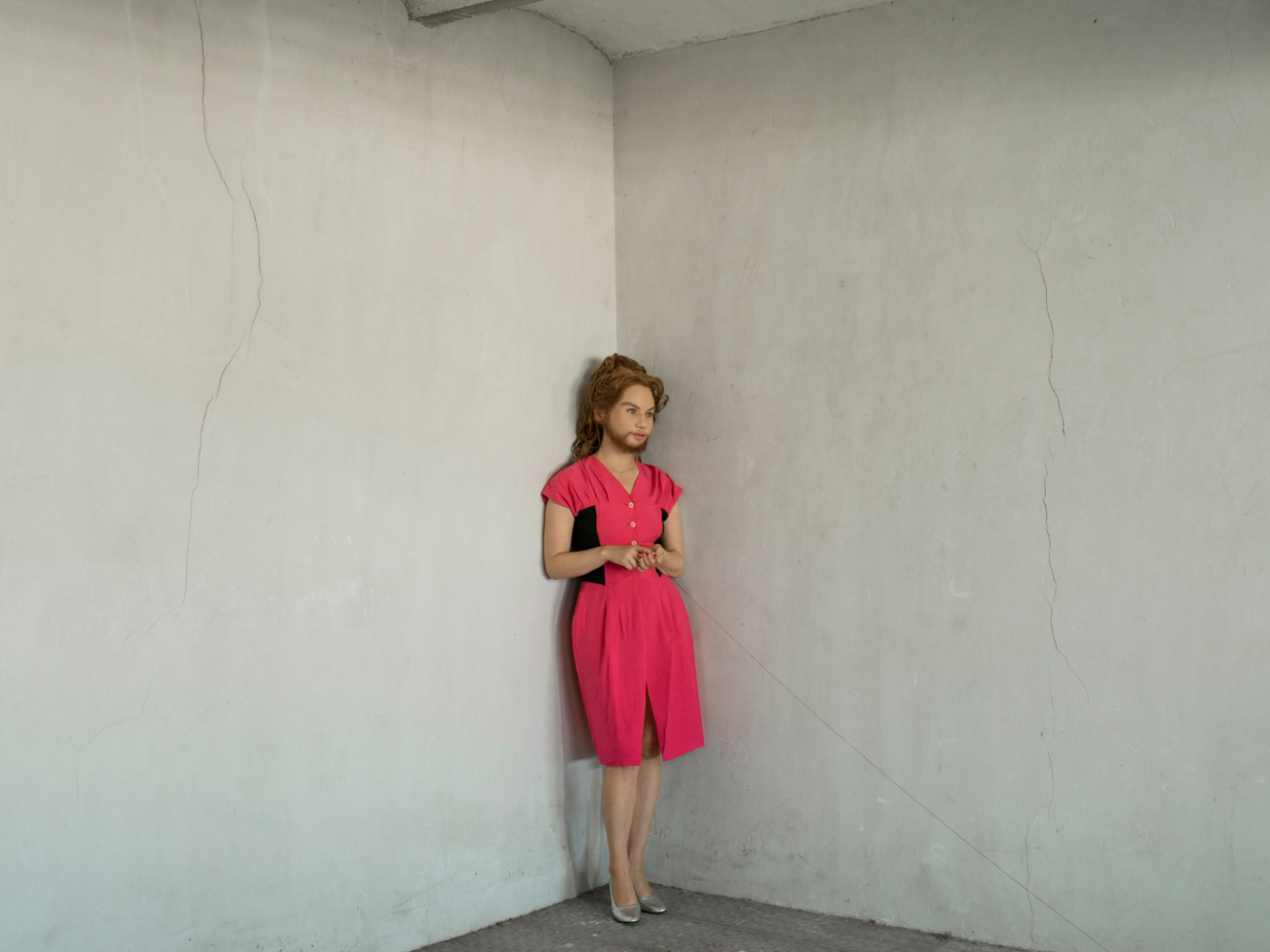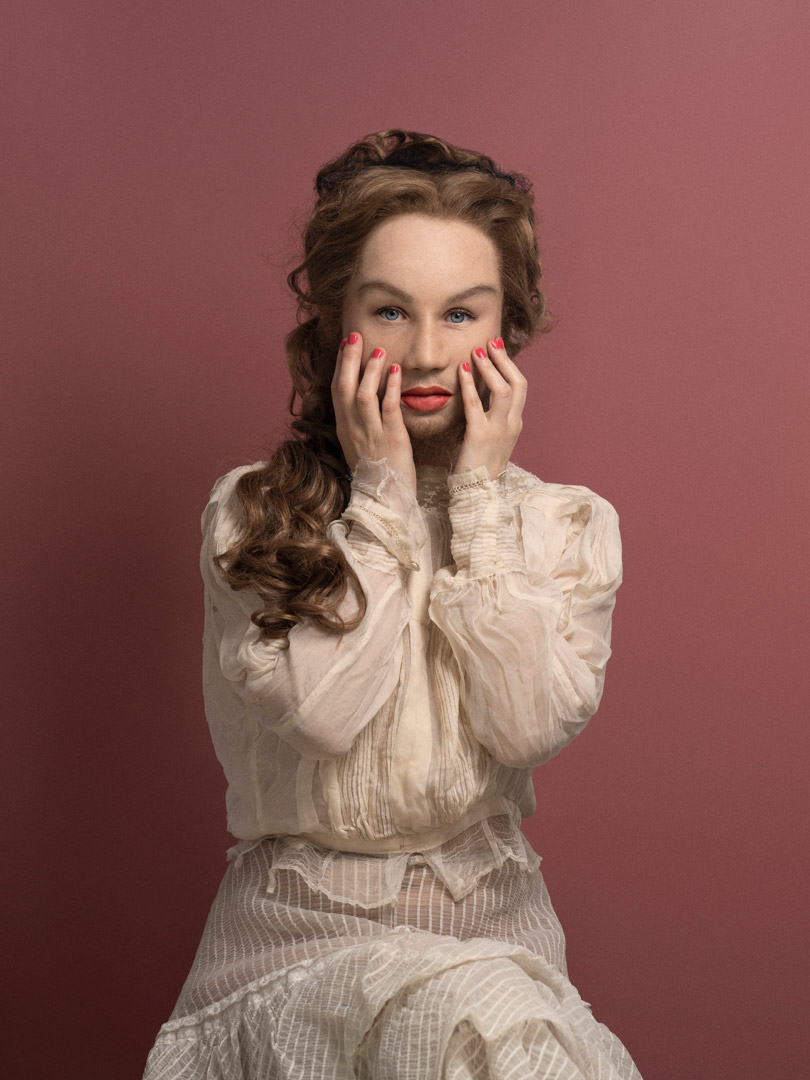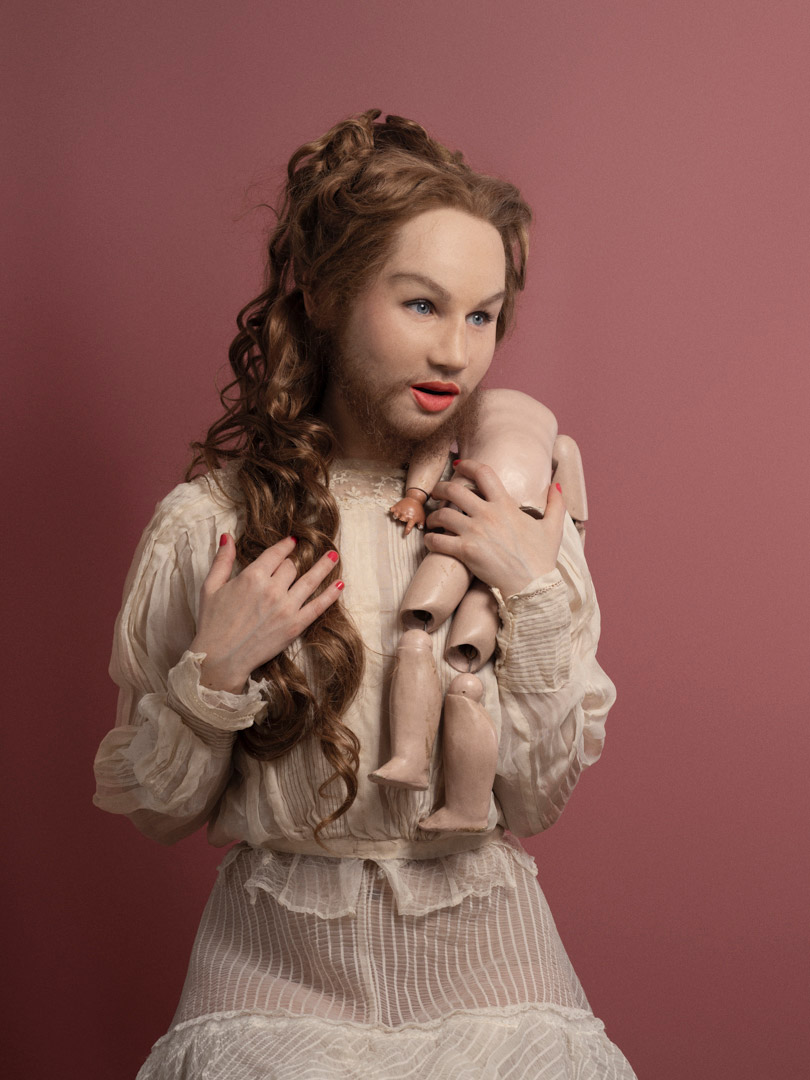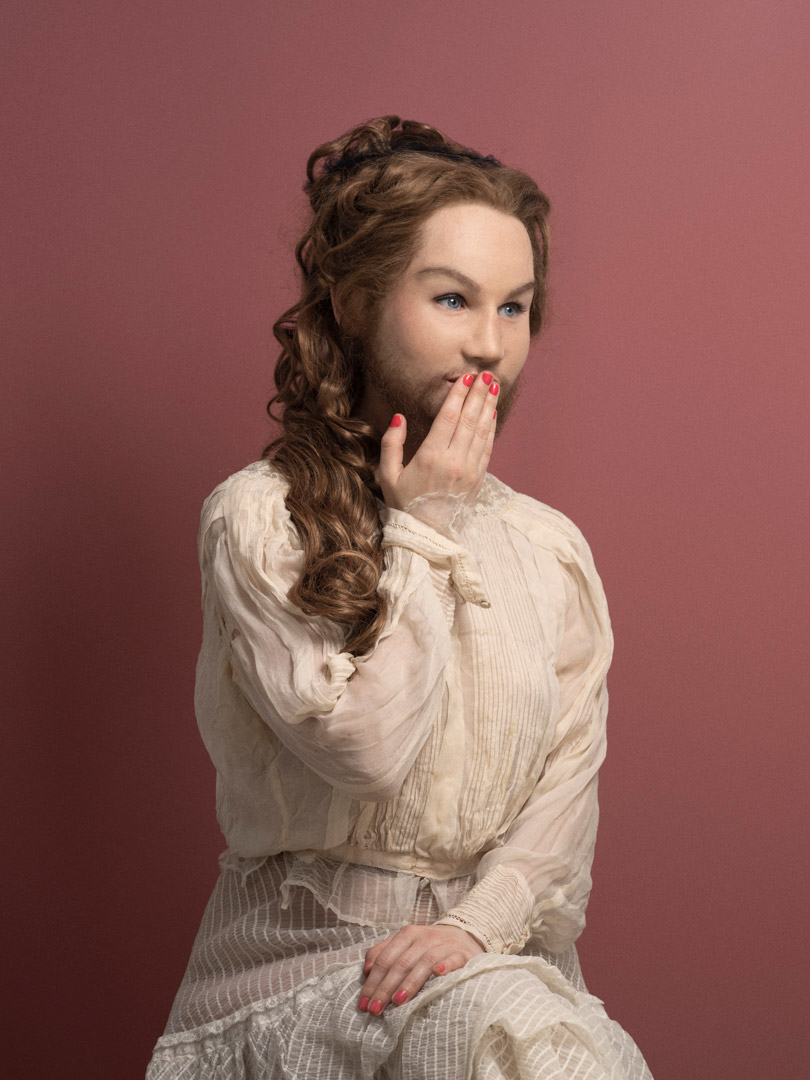Strangely Familiar, 2020
“As a photographer, my preferred environment takes place in the world of staged photography, a world that visually transforms, by clues, a real event into an artificial set capable of arousing sensory emotions in the beholder.
Through a modern reinterpretation, Strangely Familiar illustrates the psychological portrait of Julia Pastrana, a woman relentlessly derided and gone down in history as the “bearded lady,” one of the most famous human freaks of the 19th century. Her husband exploited Julia Pastrana in numerous shows, the most famous “The Ugliest Woman In The World.”
This project’s premise is also loosely based on a real-life account in which I was subject to a bells-palsy (paralysis of the nerve that supplies the facial muscles on one side of the face, making the face appear to droop). From this personal situation and all the sudden new perceptions deriving from it, my imagination went beyond myself. The desire to explore more permanent afflictions of appearance deviation from the norm and societal reaction to it became compelling. I directed the focus on themes such as attraction, repulsion, isolation, solitude, and the Freudian Uncanny, which gives life to an eerie state of conflict and draws the viewer into a psychic territory of disturbance.
My personal experience acted as the trigger for my deep considerations on human behavior over the centuries and more precisely on Julia Pastrana’s suffering. It prompted me to think of opportunity injustice caused by identity-socio-psycho-anthropological prejudices and stereotypes. The idea of a psychological self-portrait embodied by the much more complicated story of Julia Pastrana, bearer of all the above issues, could potentially work as a starting point to raise questions about the discomfort with relationships that confronted me. A perturbing perception deriving not only from strangers but also from my own family. Society is still very discriminant and therefore modifies the concept of “dignity.” This and many other layers plaid as sparks in the making of this body of work.
.
The image “Strangely Familiar,” illustrating vacant bodies with numbers on them, recalls a situation I suffered during the months of my facial paralysis. Traveling on a bus among anonymous passengers, I considered the disturbing feeling of all the unceasing glances filled with disgust directed towards my asymmetrical face. I felt like I was on display and subject to primitive stare in a peep show with voyeuristic purposes. That unsettling experience fixes the precise moment in which I visioned the possibility of a photographic narration by metaphorically combining my psychological involvement to the body of Julia Pastrana, giving her justice and transforming that personal experience into a universal one and embracing deeper layers.
Defending human rights requires one to step back from one’s needs and savageness. Fragility, in the condition of co-presence and dependence on others, in both individual and plural destiny, is revealed as a precious asset in the relational context. On the one hand, the physical-aesthetic defect heavily discriminates and isolates the person affected by it; on the other, it stimulates in the same person the reaction of having to look closely at the pretended normality of other individuals who exert an uneducated behavior”
Guia Besana
